Effect of Soil Box Boundary Conditions on Dynamic Behavior of Model Soil in 1 g Shaking Table Test
Abstract
1. Introduction
2. 1 g Shaking Table Test
2.1. Soil Used for Creating Ground and Test Equipment
2.2. Configuration of Test Program
3. Analysis of 1 g Shaking Table Test Result
3.1. Shear Wave Speed
3.2. Analysis of Peak Ground Acceleration
3.3. Analysis of SA
4. Conclusions
- (1)
- For the RB, the amplification of Peak Ground Acceleration and Spectral Acceleration at the center was greater than that of the wall. This implies that the ground model motion is different from free field because the lateral boundary of the RB is constrained, and the reflected wave occurring in the wall generates different stresses to amplify acceleration.
- (2)
- In contrast, for the LSB, both the Peak Ground Acceleration and the acceleration spectrum are similar at the same depth in the center and the wall of the soil box, respectively. This indicates that the LSB is better than the RB when performing the 1 g shaking table test for understanding the dynamic behavior of soil.
- (3)
- In order to evaluate the possible reduction in the boundary problems, sponges were attached to the side wall of the RB. Although the major amplification period of the wall and the center on the surface showed a slight difference when a sponge was attached to the RB, the center and the wall in the ground model showed similar behaviors, implying that the use of sponges in the RB may mitigate some boundary effects. However, because the rigidity varies with the types of sponges, the material selected for the test contributes to different effects of reducing boundary conditions, and the sponge thickness between 5 cm and 15 cm did not exhibit a significant impact on the result.
Author Contributions
Funding
Acknowledgments
Conflicts of Interest
References
- Kokusho, T.; Iwatate, T. Scaled model tests and numerical analyses on nonlinear dynamic response of soft grounds. Proc. Jpn. Soc. Civ. Eng. 1979, 1979, 57–67. [Google Scholar] [CrossRef]
- Lamb, T.W.; Whitman, R.V. Soil Mechanics; SI Version; John Wiley & Sons Inc.: New York, NY, USA, 1969. [Google Scholar]
- Fiegel, G.L. Centrifugal and Analytical Modeling of Soft Soil Sites Subjected to Seismic Shaking; University of California, Davis: Davis, CA, USA, 1995. [Google Scholar]
- Sundarraj, K.P. Evaluation of Deformation Characteristics of 1-g Model Ground During Shaking Using a Laminar Box. Ph.D. Thesis, University of Tokyo, Tokyo, Japan, 1996. [Google Scholar]
- Lee, Y.J. Development of Laminar Box Manufacturing Technique for Earthquake Engineering. Master’s Thesis, Seoul National University, Seoul, Korea, 2001. [Google Scholar]
- Kim, J.M.; Ryu, J.H. Numerical Evaluation on the Model Ground Motion Characteristics of Rigid and Laminar Shear Box Systems. J. Res. Inst. Ind. Tech. 2007, 66, 39–45. [Google Scholar]
- Kim, J.M.; Ryu, J.H.; Son, S.Y.; Na, H.Y.; Son, J.W. A Comparative Study on Dynamic Behavior of Soil Containers that Have Different Side Boundary Conditions. J. Korean Geotech. Soc. 2011, 27, 107–116. [Google Scholar] [CrossRef]
- Son, J.W. A Comparative Study on Dynamic Behavior of Soil Containers Having Different Boundary Conditions. Master’s Thesis, Busan National University, Seoul, Korea, 2012. [Google Scholar]
- Park, S.B. Effect of Installation Angel of Soil Nail on Dynamic Slope Behavior. Ph.D. Thesis, Chungbuk National University, Seoul, Korea, 2015. [Google Scholar]
- Kim, H.S. Dynamic Behavior of Friction Pile According to Shape of Pile Cap. Master’s Thesis, Chungbuk National University, Seoul, Korea, 2016. [Google Scholar]
- Bhattacharya, S.; Lombardi, D.; Dihoru, L.; Dietz, M.S.; Crewe, A.J.; Taylor, C.A. Model Container Design for Soil-Structure Interaction Studies. In Role of Seismic Testing Facilities in Performance-Based Earthquake Engineering; Fardis, M.N., Rakicevic, Z.T., Eds.; Springer: Dordrecht, The Netherlands, 2012; pp. 135–158. [Google Scholar]
- Song, M.W.; Kim, W.M.; Kim, D.H.; Choi, C.Y. Prediction of the Elastic Modulus of Improved Soil Using the Flat TDR System. J. Korean Geotech. Soc. 2016, 15, 77–85. [Google Scholar]
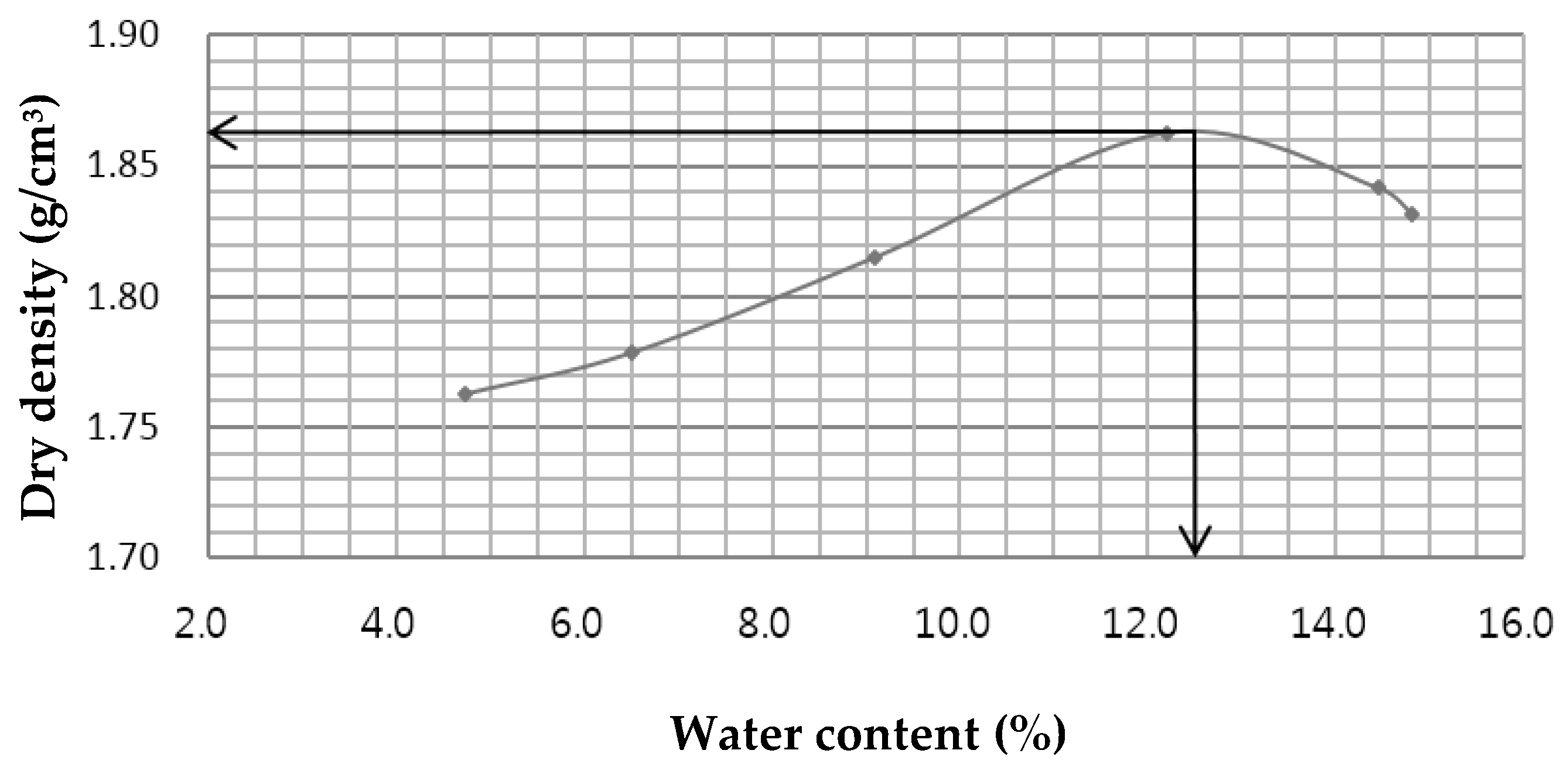
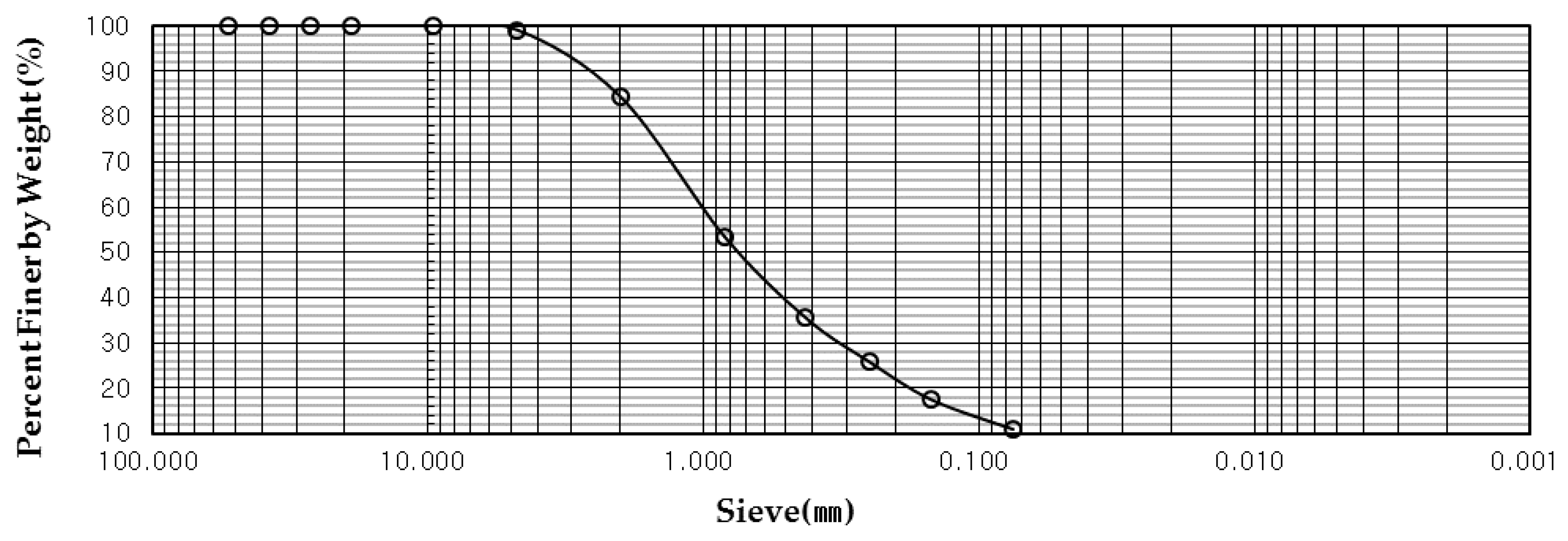
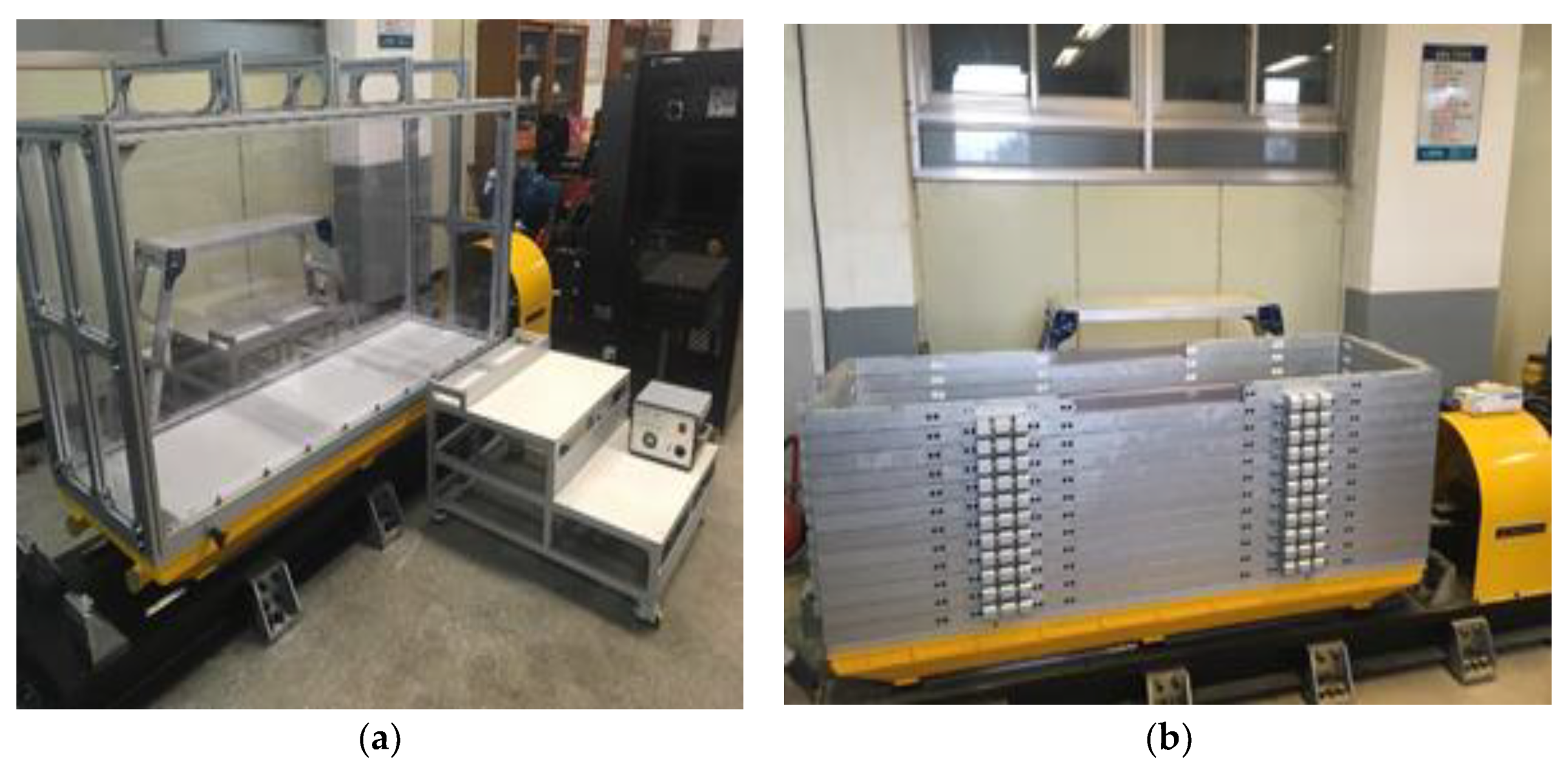
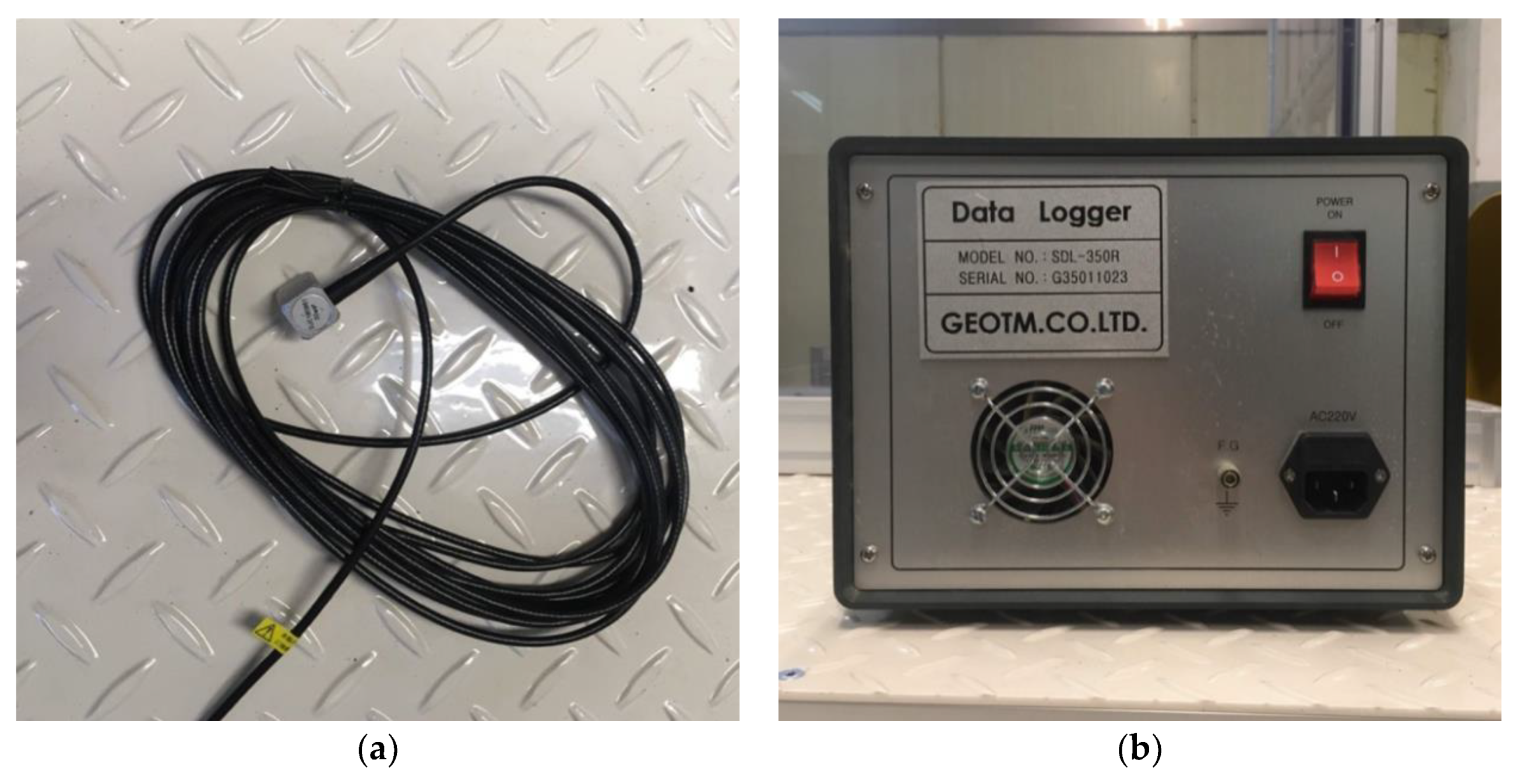
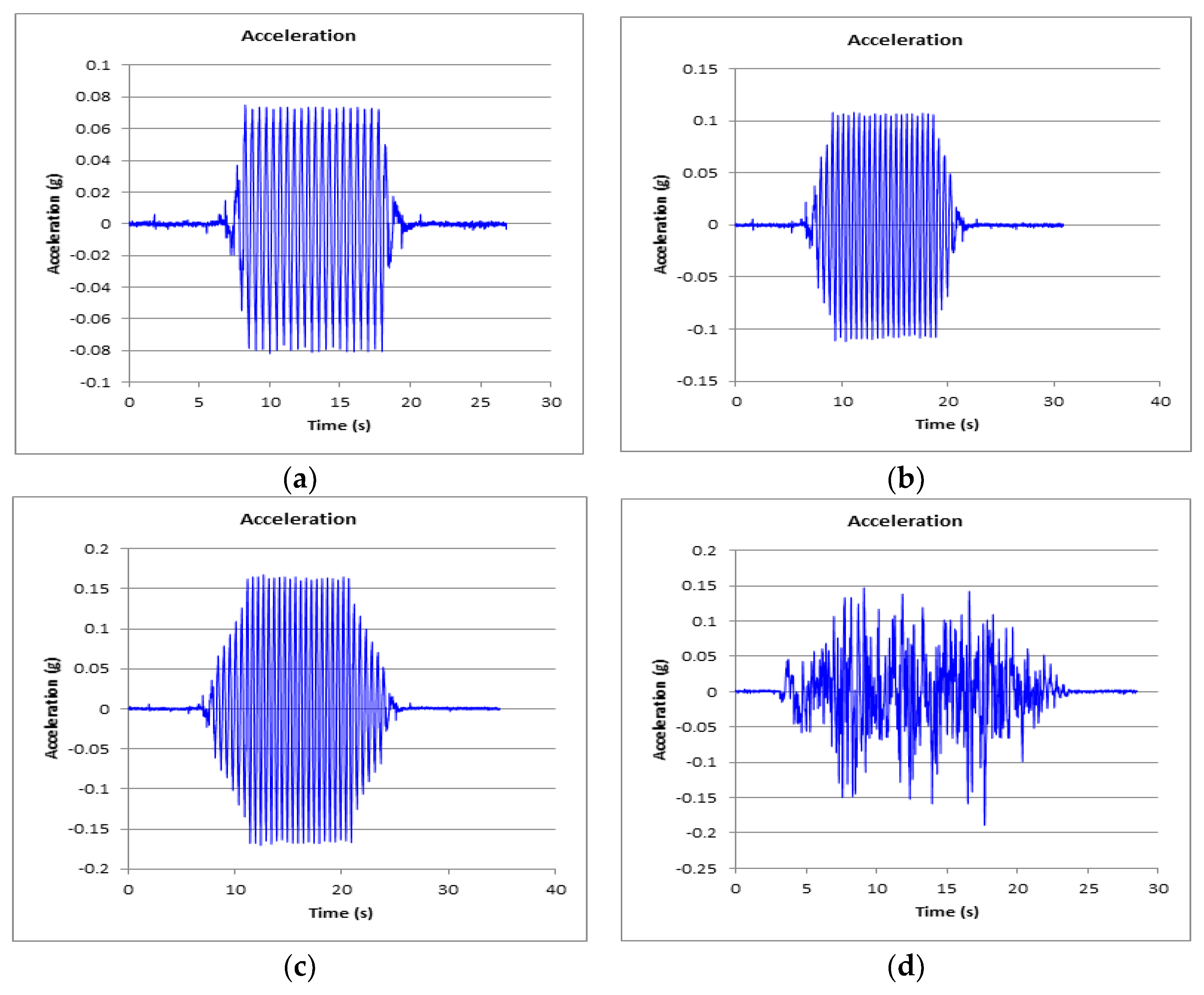
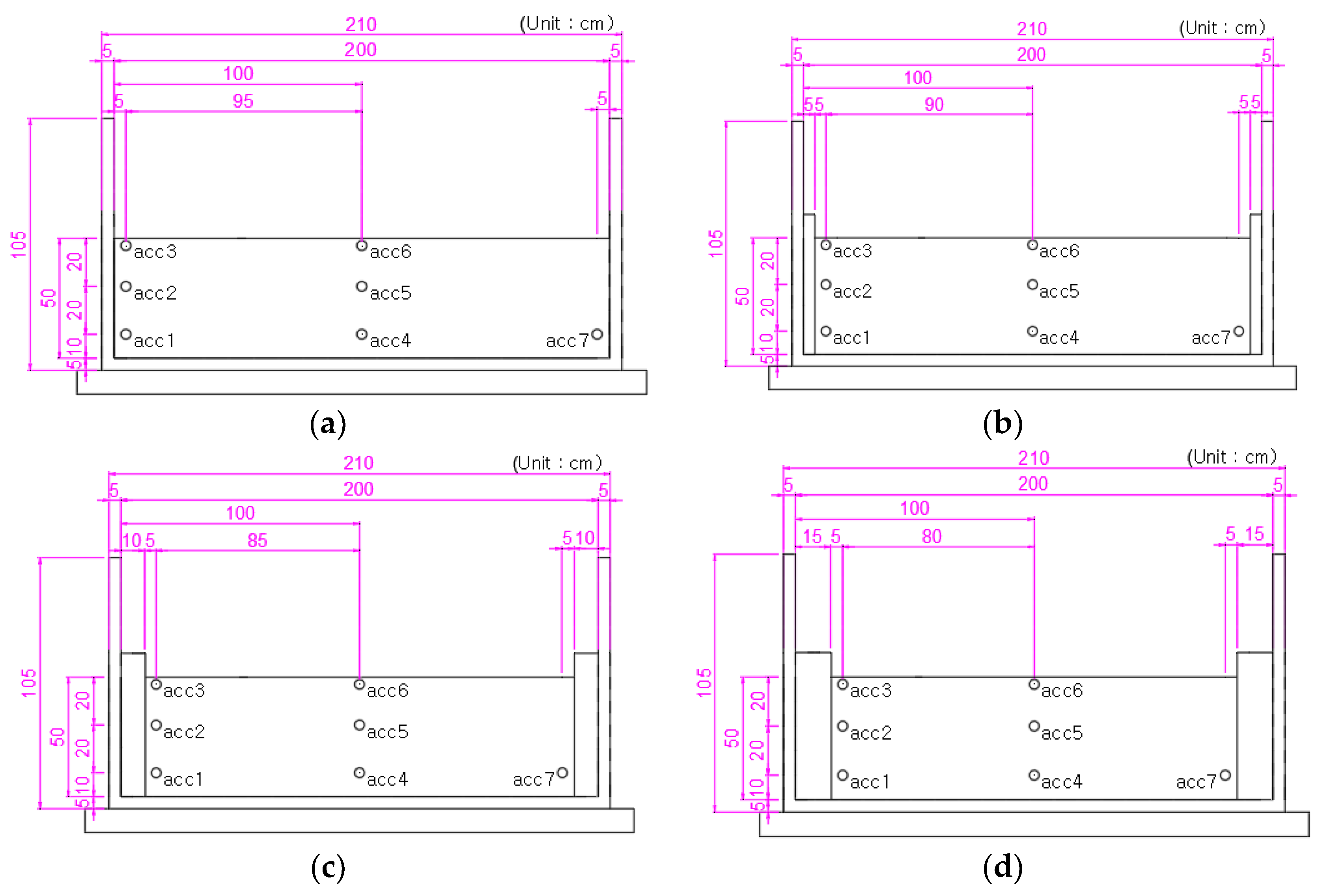


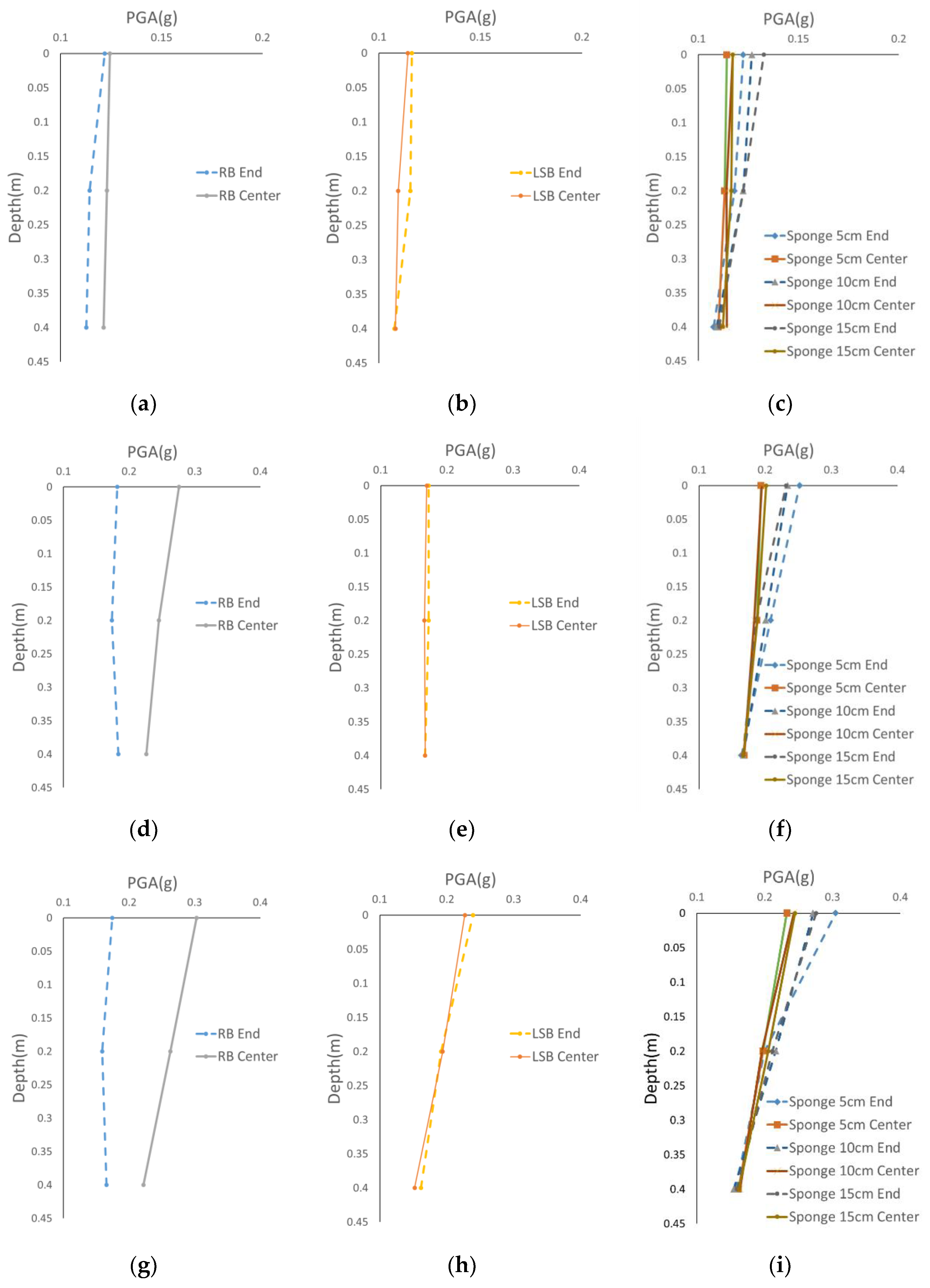
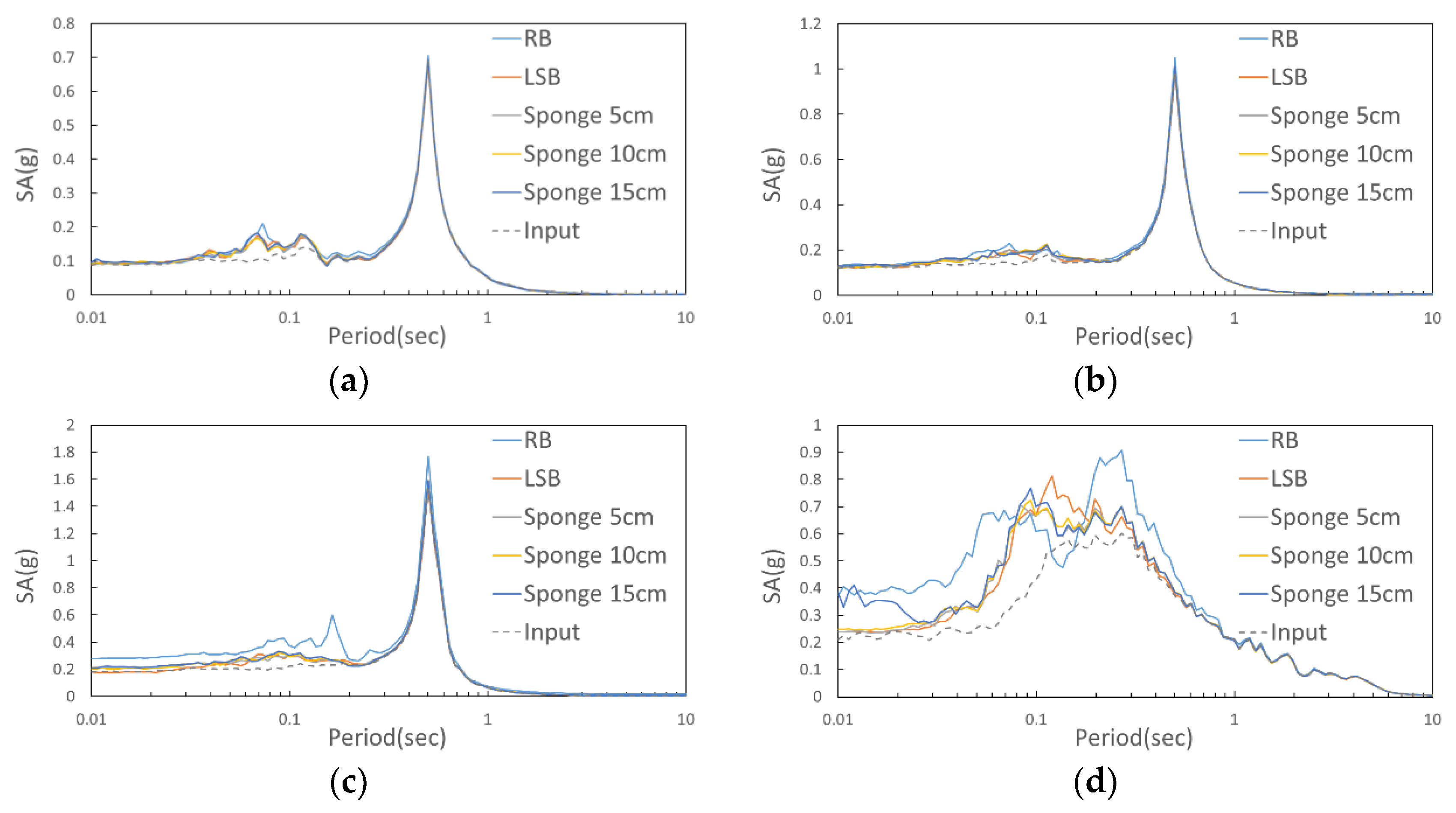
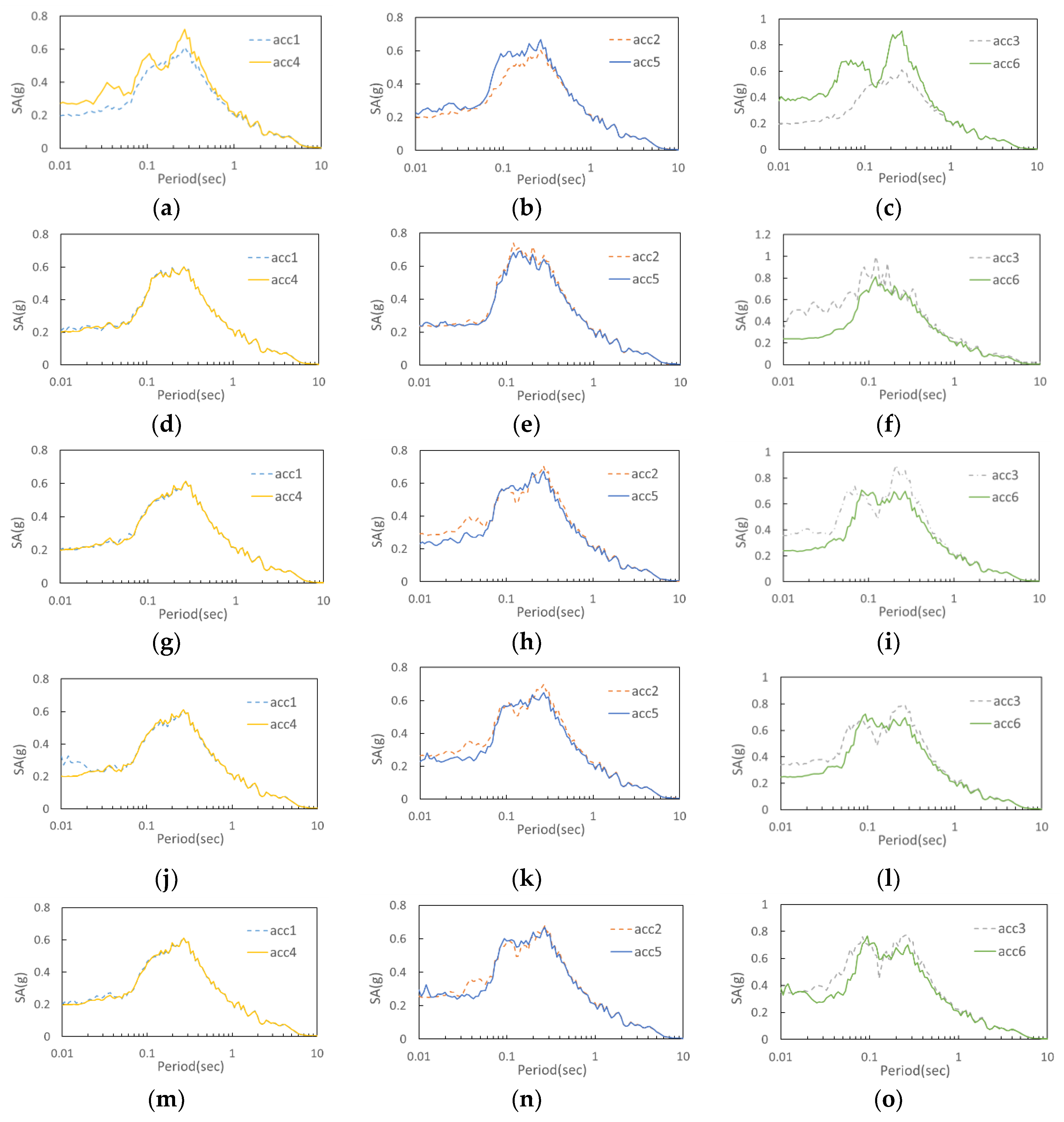
| Physical Properties | ||||||||
|---|---|---|---|---|---|---|---|---|
| Gs | No.200 Passing (%) | OMC (%) | PI (%) | USCS | ||||
| 2.69 | 10.8 | 12.5 | NP | SW-SM | 1.123 | 0.443 | 18.27 | 12.43 |
| Case | Soil Box | Slope | Sponge | Input Wave | |
|---|---|---|---|---|---|
| 1 | RB | Flat (Height 50 cm) | – | Sine wave | 0.07 g |
| 2 | 50 mm | 0.1 g | |||
| 3 | 100 mm | 0.154 g | |||
| 4 | 150 mm | Artificial earthquake | 0.18 g | ||
| 5 | LSB | – | |||
© 2020 by the authors. Licensee MDPI, Basel, Switzerland. This article is an open access article distributed under the terms and conditions of the Creative Commons Attribution (CC BY) license (http://creativecommons.org/licenses/by/4.0/).
Share and Cite
Kim, H.; Kim, D.; Lee, Y.; Kim, H. Effect of Soil Box Boundary Conditions on Dynamic Behavior of Model Soil in 1 g Shaking Table Test. Appl. Sci. 2020, 10, 4642. https://doi.org/10.3390/app10134642
Kim H, Kim D, Lee Y, Kim H. Effect of Soil Box Boundary Conditions on Dynamic Behavior of Model Soil in 1 g Shaking Table Test. Applied Sciences. 2020; 10(13):4642. https://doi.org/10.3390/app10134642
Chicago/Turabian StyleKim, Hoyeon, Daehyeon Kim, Yonghee Lee, and Haksung Kim. 2020. "Effect of Soil Box Boundary Conditions on Dynamic Behavior of Model Soil in 1 g Shaking Table Test" Applied Sciences 10, no. 13: 4642. https://doi.org/10.3390/app10134642
APA StyleKim, H., Kim, D., Lee, Y., & Kim, H. (2020). Effect of Soil Box Boundary Conditions on Dynamic Behavior of Model Soil in 1 g Shaking Table Test. Applied Sciences, 10(13), 4642. https://doi.org/10.3390/app10134642





